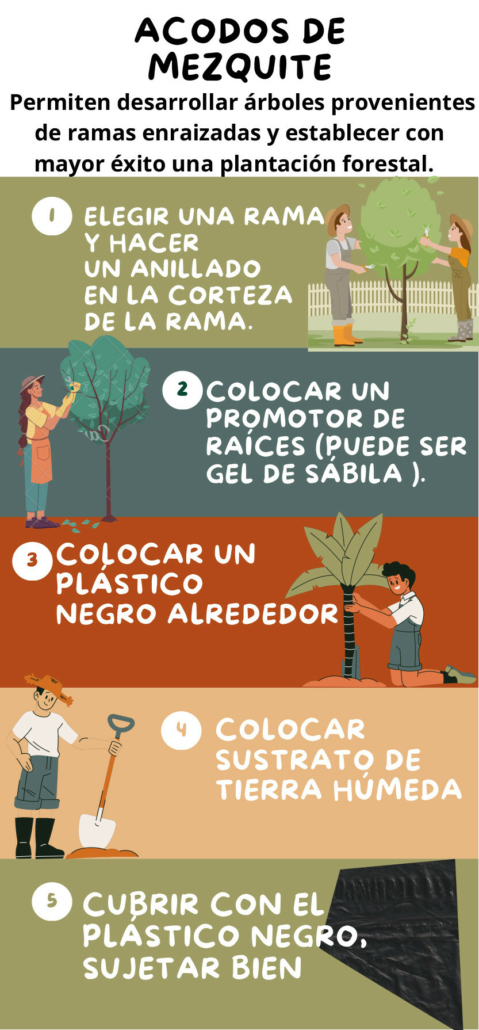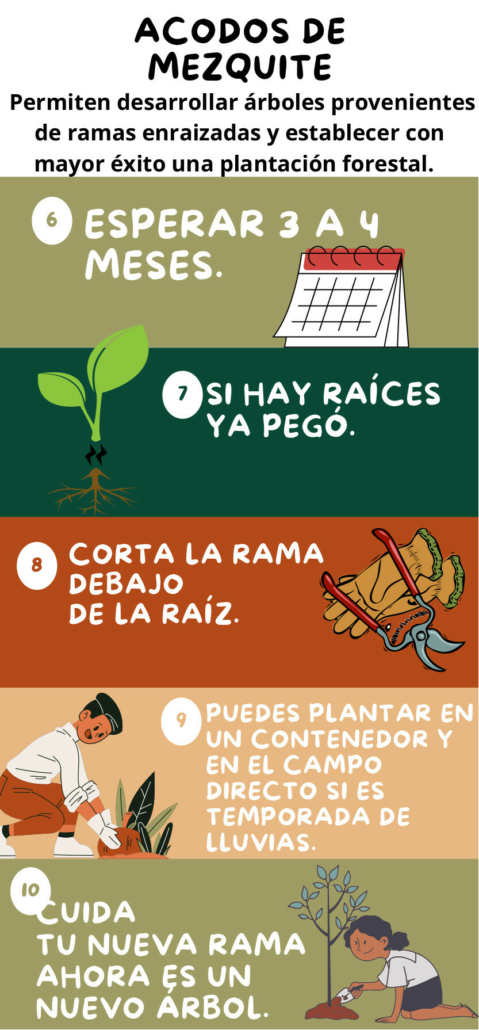Tag Archive for: Reforestation
Reforestar para impulsar la agricultura regenerativa
/by Ana Tuñas MatillaMadrid (EuroEFE).- La plantación de árboles en zonas de cultivo permite mejorar las condiciones del suelo, pilar básico de la denominada agricultura regenerativa, un sistema de cultivo basado en soluciones naturales que busca enriquecer los terrenos para una producción más «sana y nutricional».
Por ello, en la Finca de La Junquera (Murcia), que apuesta por la agricultura regenerativa, se plantarán 10.000 árboles a lo largo de los próximos meses en colaboración con Life Terra, un proyecto cofinanciado con fondos europeos que promueve la plantación de 500 millones de árboles en la Unión Europa, uno por cada habitante.
En total, se actuará sobre 10 hectáreas, ha explicado el propietario de La Juntera, Alfonso Chico de Guzmán, durante la plantación de las primeras unidades.
La finca, que ocupa más de 1.100 hectáreas, se encuentra en el municipio de Caravaca de la Cruz, en Murcia, una de las zonas más secas de la Península y en riesgo inminente de desertificación debido, principalmente, al cambio climático y las prácticas agrícolas convencionales.
SEGUIR LEYENDO EN “EUROEFE”
Nature Funding Must Triple by 2030 to Protect Land, Wildlife and Climate
/by Michael Tayor(Thomson Reuters Foundation) – Global annual spending to protect and restore nature needs to triple this decade to about $350 billion by 2030 and rise to $536 billion by 2050, a U.N. report said on Thursday, urging a shift in mindset among financiers, businesses and governments.
The inaugural State of Finance for Nature report looked at how to tackle the planet’s climate, biodiversity and land degradation crises, estimating about $8 trillion in investment would be needed by mid-century to safeguard natural systems.
Inger Andersen, executive director of the United Nations Environment Programme (UNEP), told the report launch the amounts required may sound large but “it’s peanuts when we are frankly talking about securing the planet and our very own future”.
“Our health, the quality of our lives, our jobs, temperature regulation, the housing we build and of course the food we eat, the water we drink” all depend on well-functioning natural systems, she said.
Report co-author Ivo Mulder, who heads UNEP’s climate finance unit, said financial flows should work with nature rather than against it.
South Africa’s Potential to Expand Tree Cover as a Climate Mitigation Tool
/by Tunicia Phillipsouth Africa is counting on its tree cover to act as a protected carbon sink that will further drop emissions accelerating climate change.
The policy move is in line with international climate commitments and a 2018 warning from leading scientists that forests are a major requisite in the global fight against catastrophic climate change, thanks to their unparalleled capacity to absorb and store carbon.
The Intergovernmental Panel on Climate Change says that stopping deforestation and restoring damaged forests could provide up to 30% of the climate solution.
Boost to mitigation efforts
South Africa’s land cover is dominated by open ecosystems in the form of shrublands (covering just less than 40% of the total land area), savanna woodlands (33%) and grasslands (27%).
Both indigenous and exotic forest plantations make up the remainder, with indigenous forests occupying less than 0.3% of South Africa’s land area, according to GeoTerraImage, while exotic forest plantations occupy about 1% of the overall area.
The Immense Potential Of Forests To Sequester Carbon
/by Brian StewartMost of us understand that trees are good for the environment and that they absorb carbon in order to grow. We are familiar with comparisons that show how many trees would have to be planted in order to compensate for the carbon emissions from an airplane flight or from driving our cars. We have heard some people say that planting trees would solve our climate change problems. But is this really true? Is it bad to harvest forests to produce lumber? How much carbon could we eliminate from the atmosphere through better forest management? We sat down with two forestry management and carbon offset program experts to discuss this topic and here is what they had to say.
Julius Pasay is the Director of Project Development at The Climate Trust, a nonprofit organization that combats climate change by funding and managing projects that reduce greenhouse gas emissions and has been in operation since 1997. Julius oversees forestry and grassland programs, and works on carbon offset project development with landowners and land managers throughout the U.S. Julius is a Certified Forester and holds a Master of Forestry from the Yale School of Forestry and Environmental Studies.
The Best Way to Restore Forests Is To Let The Trees Plant Themselves
/by Andrea D SteffenEcosystems have been growing themselves for hundreds of millions of years, and forests that plant themselves are better and most diverse. That’s why a group of environmental advocates in the UK from a charity called Rewilding Britain say we should let nature do its thing instead of manually mass-planting trees. Natural dispersal of seeds boosts biodiversity, costs a lot less, and may even sequester more carbon.
Rebecca Wrigley, Rewilding Britain’s chief executive, said:
People have this mindset that woodland expansion means planting trees, and that’s across the conservation sector as well. Nature is pretty good at doing this itself. Natural regeneration brings multiple potential benefits – you get the right tree in the right place, you don’t get the potential carbon emissions you get with planting on peaty soils, and you boost the complexity of the ecosystem, which builds resilience. Natural regeneration also helps species to shift and adapt to climate change. There’s growing evidence that it can sequester more carbon, although there isn’t a broad research base yet because natural regeneration is not on people’s radars.
Cómo reforestar el planeta para mitigar la crisis climática
/by Angel Enrique Salvo Tierra y Antonio Flores MoyaUna de las fórmulas más contundente de mitigación de la crisis climática a nivel global consiste en la creación de anillos, cinturones y murallas verdes. Ya se están desarrollando a gran escala en los distintos continentes.
La estrategia se basa en plantaciones de miles de millones de árboles, entendidos como infraestructuras verdes. Aportan beneficios relacionados con el secuestro de carbono y la conservación de la biodiversidad, entre otros factores.
Los primeros cinturones verdes
Suele considerarse que el primer cinturón verde fue diseñado por Moisés hace más de 3 000 años en los ejidos de los alrededores de las doce ciudades levitas. Fue la respuesta a una de las mayores crisis climáticas de la historia, probable causa real de las conocidas como 10 plagas de Egipto.
Puede también considerarse cinturón verde el diseñado por Mahoma en el siglo VII alrededor de la emblemática ciudad de Medina, mediante la prohibición de talar árboles en una franja de 20 km.
Letting Forests Regrow Naturally Is a Simple yet Effective Way to Fight Climate Change
/by Nancy Harris- The potential rates of carbon capture from natural forest regrowth are far higher than previously estimated.
- Letting forests regrow naturally has the potential to absorb up to 8.9 billion metric tons of carbon dioxide from the atmosphere each year through 2050.
- This is the equivalent of 23% of global CO2 emissions and will be on top of the 30% currently absorbed by existing forests.
There’s increasing recognition of how nature can help tackle the climate crisis. From protecting standing forests to planting new trees, forests offer significant climate mitigation benefits. Now, new research shows that letting forests regrow on their own could be a secret weapon to fighting climate change.
Experts at WRI, The Nature Conservancy and other institutions mapped potential rates of carbon capture from “natural forest regrowth,” a restoration method distinct from active tree-planting, where trees are allowed to grow back on lands previously cleared for agriculture and other purposes.
The Secret Behind Costa Rica’s Remarkable Green Transformation
/by Jude WebberAldo Sánchez surveys a field of lofty banana trees with cacao plants bursting with fruit nestled beneath them. “Two and a half years ago, this was pure pasture,” he says. Indeed, his neighbor’s field is just grass.
Four decades ago, a swath of land including Sánchez’s farm in Jabillos in central Costa Rica was deforested to plant coffee. It was later turned over to cattle, but ranching dried up when prices collapsed. Cacao — the raw material for chocolate — had not been planted since the late 1970s, when the monilia fungus destroyed 80 percent of the national crop.
“Even 10 kilometers [6 miles] away, people couldn’t believe we were planting cacao because the last people to do that were their grandparents,” Sánchez says.
His farm is a successful example of agroforestry — the sustainable combination of crops with trees — that is complementing Costa Rica’s remarkable reforestation in the past three decades.
Today, with exuberant tropical vegetation cloaking its countryside, it’s hard to imagine that the Central American nation of 5 million people could once have been any greener.
Land Restoration in Latin America Shows Big Potential for Climate Change Mitigation
/by International Center for Tropical Agriculture (CIAT)Land restoration in Latin America and the Caribbean is picking up pace and scaling up projects will help the region meet its pledges under the Bonn Challenge, which aims to restore 350 million hectares of degraded and deforested land worldwide by 2030. A new study led by the International Center for Tropical Agriculture (CIAT) and Wageningen University supplies a first map of restoration projects in Latin America and shows their potential to mitigate climate change through restoring forests.
Researchers took stock of the location, goals and activities of 154 projects in Latin America and the Caribbean, starting a database to guide practitioners in scaling up restoration. They mapped projects under five initiatives working towards the Bonn Challenge goals – the 20×20 Initiative, the Global Environment Facility, the Clean Development Mechanism (CDM), the Forest Investment Program (FIP) and independent local projects – in tandem with mapping the potential biomass increase that forest restoration could achieve across the region’s various ecosystems.
KEEP READING ON EUREKALERT
Tag Archive for: Reforestation
Nothing Found
Sorry, no posts matched your criteria
All charitable donations are deductible to the full extent allowed by the law.
+1 952-777-3239
© 2019 Regeneration International


